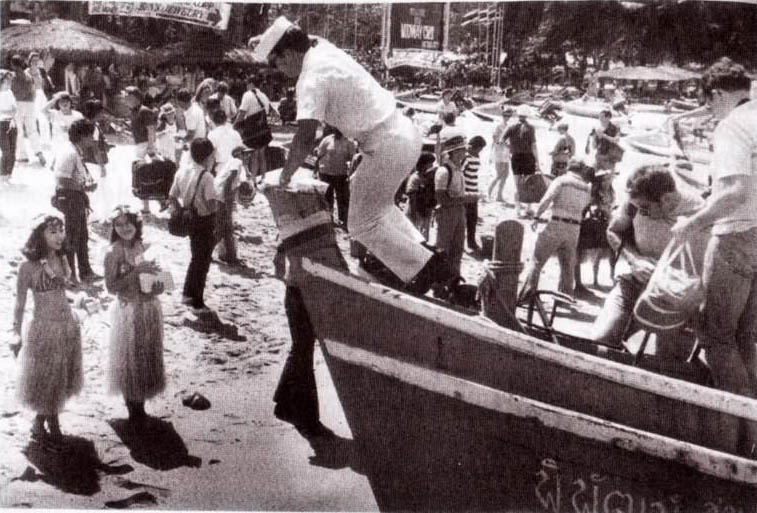History of Sex Trafficking in Thailand
Part I
How Thailand became a sex tourism hotspot that in part contributed to the rise of organized crime sex trafficking and the evolution of the anti-trafficking response. This overview addresses the Western-facing sex industry and not local demand.
When thousands of U.S. military personnel began docking on Thailand’s shores during the Vietnam War, hundreds of desperately impoverished women needing to provide for their families saw an opportunity. Many rural families suffered due to lack of jobs and non-livable wages, and, as Thailand’s population grew within the country’s cities, they saw their financial prospects vanishing before their eyes. As American troops started filling Thailand’s streets and local bars, they searched for companionship and sex. Many women were left with a choice -- they could either cope with the poverty gripping their lives and continue to hope for what was sure to be low paying jobs, or, enter sex work. Many women chose the latter. Some were pushed by their parents and families to do sex work so that they could send money home and change their family’s fortunes and status. With that decision made by many women in Thailand’s local towns, inner cities, and further throughout the sprawling streets of 1960s Thailand, sex tourism suddenly exploded in Thailand, Southeast Asia’s most thriving economy.
U.S. Navy ships first docked in Pattaya, a coastal city that is now essentially the capital of Thailand’s sex tourism industry. Today, Thailand’s sex industry is larger than ever. In Pattaya alone, roughly 6 million tourists flock to the city per year. It’s no coincidence that the majority of the tourists visiting the beachside city are also mostly men. Bangkok, Phuket are other “hotspot” destinations that are glowing neon beacons of the sex industry, promising sex to anyone with $10-50 USD.
Not long after the Vietnam War, the sex industry, and the effects of sex tourism, took a sinister turn with a sharp increase in sex trafficking. In the 1980s, various crime syndicates began looking to benefit from the urban demand for sex. It didn’t take long for them start trafficking young women from their rural villages. According to research by Thai Law Forum, sex trafficking was likely occurring before the 1980s, but the journal states “It was only in the 1980s that the recruiting and trafficking of young women and girls became industrialized.” They started mainly in northeastern Thailand, the country's poorest region, where they first offered young girls the promise of honest work, only deceiving them later to sell them into modern-day slavery.
Meechai Viravaidya led successful condom campaigns. Photo source
The issue was exasperated by another serious problem. In 1988, HIV/AIDS swept across the country like a raging fire. The epidemic was largely sparked by the country’s boom in prostitution. It became urgently apparent that the country needed a solution, and it needed one fast. In response to the crisis, NGOs working in collaboration with the Thai government reacted with campaigns that widely encouraged the use of condoms. The programs not only educated the public on the importance of protection in general, but they additionally emphasized the need for condoms in transactional sex. Almost immediately, the programs proved massively successful, and within a few years, the chances of contracting the virus started to significantly decline.
While the fight against HIV/AIDS started showing positive results, organized sex trafficking continued. NGOs first looked to combat the problem by pushing for new laws that would not only prohibit human trafficking and prostitution, but legislation that would actively work to pursue and hold perpetrators accountable. Despite the new attention from rights groups and NGOs, trafficking continued to play a dangerous role in Thailand’s sex trade.


